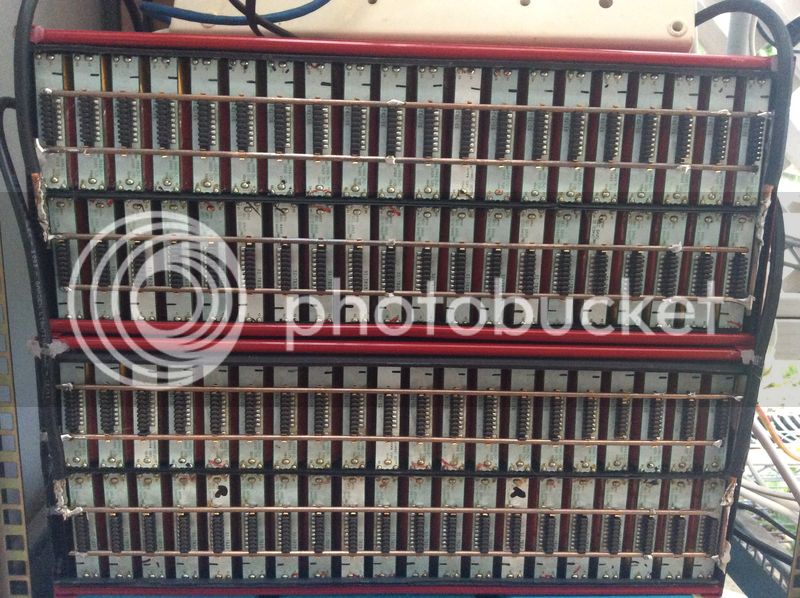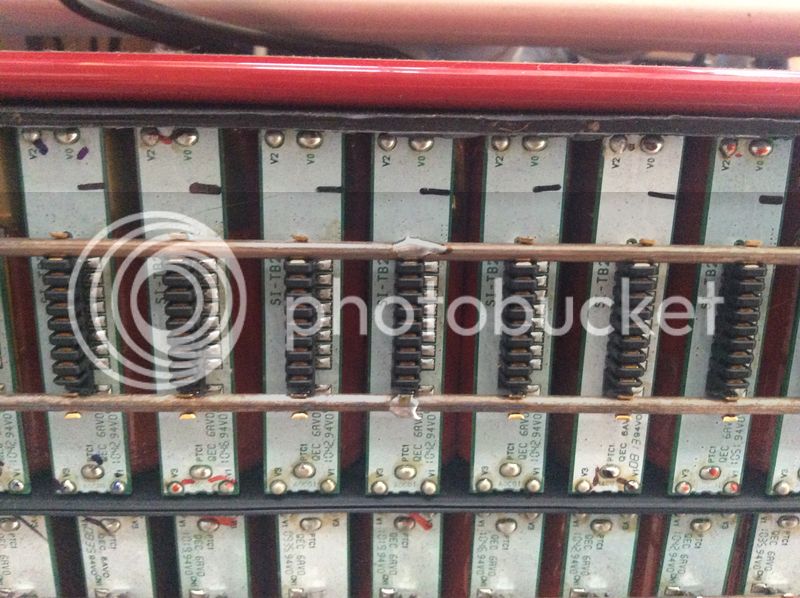Hi guys,
I had the chance to pick up 600 or so laptop batteries from work that were used for about 1.5 years, so most are in 80% or near capacity still. I sampled about 50 of them, there were a few of dead packs but most were holding capacity.
I decided to run a few tests, I charged a heap up and then let them sit for a few weeks. I found a thread where someone else did this and it was a good way to sift out the bad packs, rather than doing full capacity tests.
The batteries are perfect in shape with the case removed, which is very easy to remove. Each pack has its own balance circuit and thermal fusing for each parrellel. They are 3s 2p packs giving 11.1 nominal. I was worried this was too low for my inverters, but it works out as my inverters shut off at 10.5 or 3.5v per cell. I charge my packs to 4.05 so in this range I still get most of the capacity.
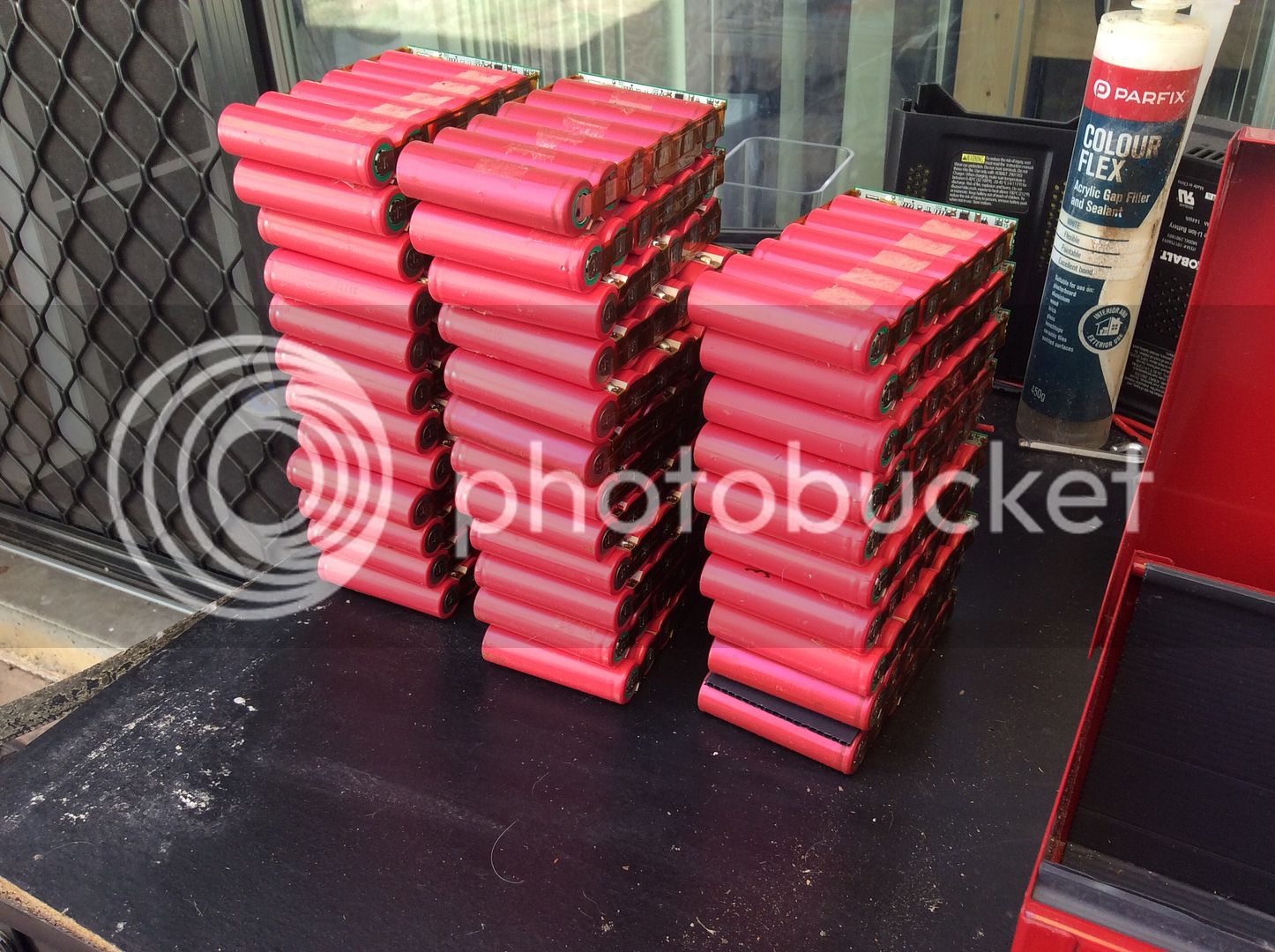
So here's the packs removed from their packaging ready for loading into my very fancy housing .
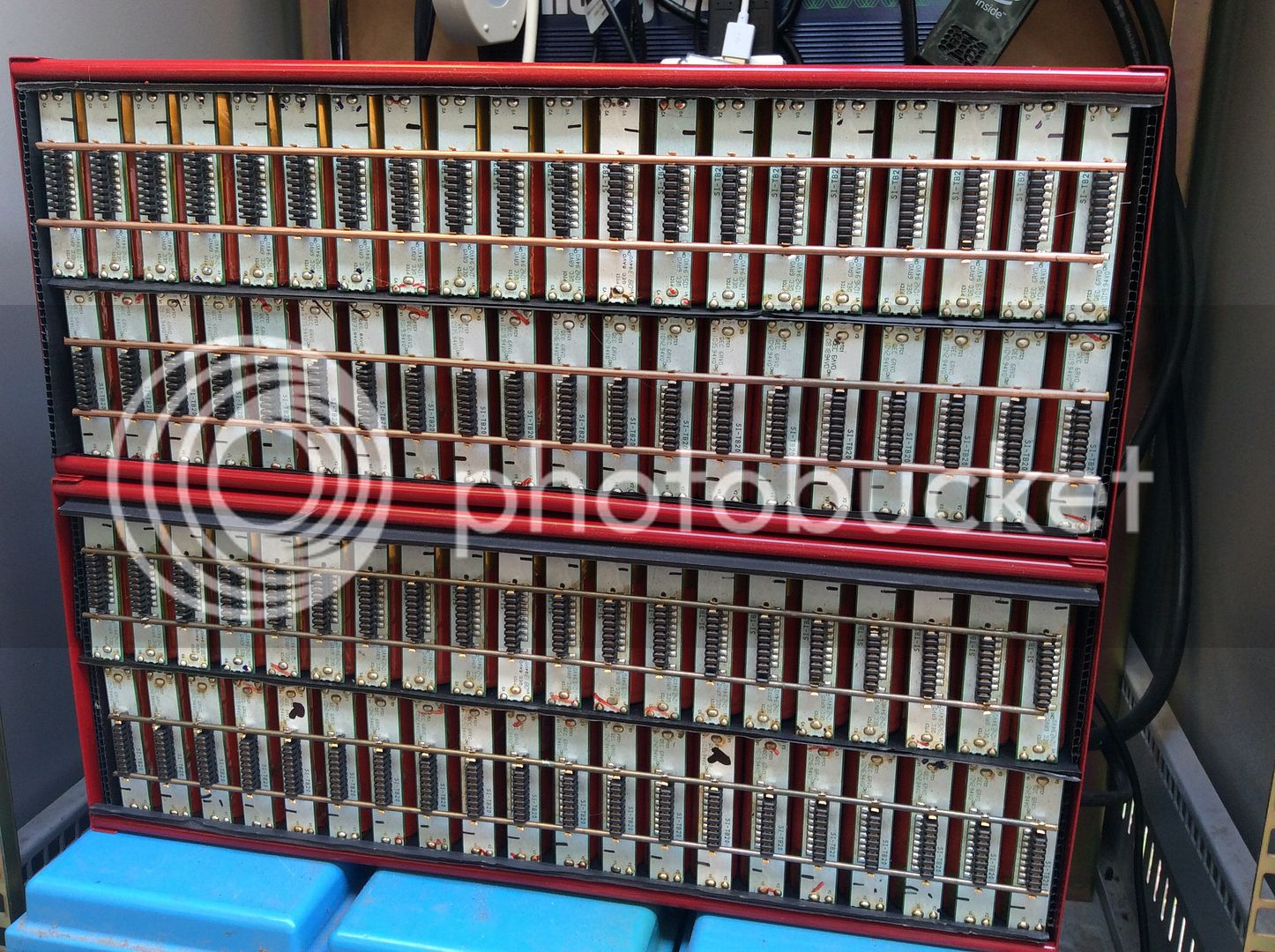
And here they are loaded into the packs and connected with copper rods. This is before I wired up the packs to the solar, but u can see how they will be stacked.
This is all housed outside of my house ! And stored in a metal server rack, so if it goes up its all seperate
Each 40 pack has a 75amp fuse as well, but I won't be ever coming close to those amps.
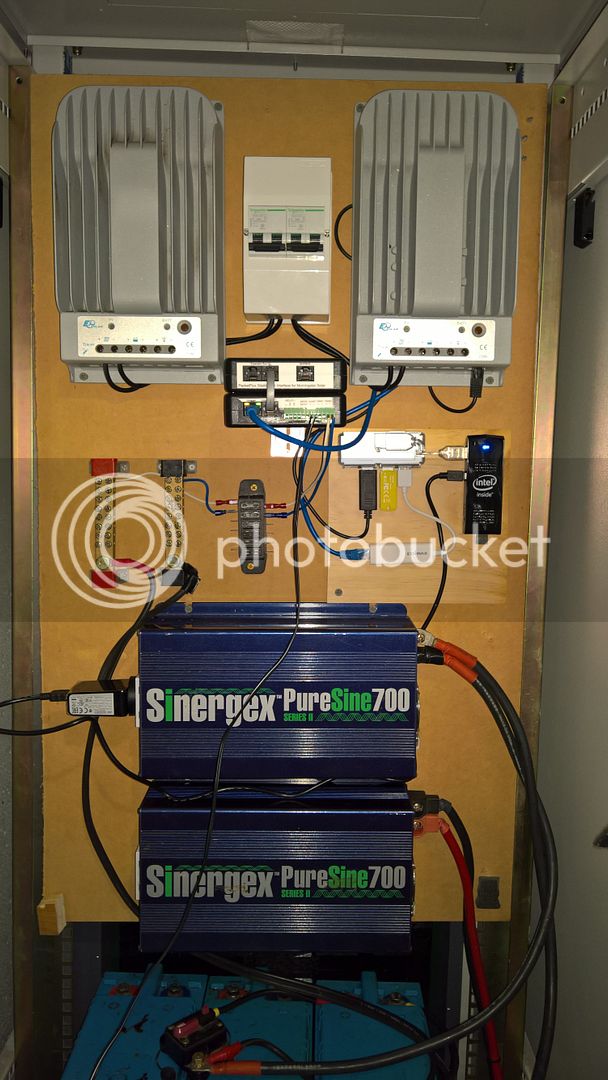
And here's the cabinet being wired up, I run a PC on a stick for remote monitoring, I'm using PRTG for graphs and record keeping. I can see things like power being used and generated etc oh and cabinet/battery temps. The PC also allows me to remotely program and monitor the solar regulators too. I can also control relays if need be for fans or to cut power etc
My solar regulators are fully programmable so I can set the max voltage charge on the packs without worry.
I will run two 700w inverters, I picked these up cheap and they are a good quality unit.
The aim of the project is to remove some of my power use to off grid and with relatively low costs in setup. I can't say I'll save huge amounts of money but I certainly enjoy the tinkering and learning aspects.
Aim is to run my reef aquarium, outside lights , security cameras and charge all my power tools like my mower etc.
To start with I'm looking for a 4.5khw a day usage, giving me about 3 days reserve battery power with the packs.
Most of my power use is in the day, so aquarium lighting and cooling are done during solar hours, this will reduce the cycle use in the batteries too.
I'll also look at possibly running my fridge. Later I also hope to run my small aircon for my room.
My limiting factor is my inverters , they are only 12v which means I'm limited to 730w max solar input, moving to 24 will put me to 1.4kw which is near my solar panel max input.
I may look at selling them to get a higher voltage unit.
So in this build I won't have to ever solder one 18650 battery on any of the 2500 cells
on any of the 2500 cells 
I have done about two months of testing with about 2.5kwh of storage and a daily cycle of 1kwh, giving the batts a good cycle thrashing of about 40% a day and sometimes depending on weather dropping the packs to 20% capacity.
So far so good, I even pulled out random individual packs and did some cell checks, every cell was perfectly balanced for the 3s, so these little in built balancers do their job.
The contact pins that meet the copper bars are holding up well and only have to transfer very little amperage, in full swing it will be 300mah that's 150mah per 18650 cell I will only ever draw a constant of the same and spikes of maybe 300mah per cell. Nothing like our ebike usages.
I will only ever draw a constant of the same and spikes of maybe 300mah per cell. Nothing like our ebike usages.
Will update once I have the other packs joined up in the coming months.
15kwh for maybe around $300 in housing, wiring and breakers ain't bad of course these ain't new cells and life cycle will be interesting but it's worth a shot.
of course these ain't new cells and life cycle will be interesting but it's worth a shot.
I had the chance to pick up 600 or so laptop batteries from work that were used for about 1.5 years, so most are in 80% or near capacity still. I sampled about 50 of them, there were a few of dead packs but most were holding capacity.
I decided to run a few tests, I charged a heap up and then let them sit for a few weeks. I found a thread where someone else did this and it was a good way to sift out the bad packs, rather than doing full capacity tests.
The batteries are perfect in shape with the case removed, which is very easy to remove. Each pack has its own balance circuit and thermal fusing for each parrellel. They are 3s 2p packs giving 11.1 nominal. I was worried this was too low for my inverters, but it works out as my inverters shut off at 10.5 or 3.5v per cell. I charge my packs to 4.05 so in this range I still get most of the capacity.

So here's the packs removed from their packaging ready for loading into my very fancy housing .

And here they are loaded into the packs and connected with copper rods. This is before I wired up the packs to the solar, but u can see how they will be stacked.
This is all housed outside of my house ! And stored in a metal server rack, so if it goes up its all seperate
Each 40 pack has a 75amp fuse as well, but I won't be ever coming close to those amps.

And here's the cabinet being wired up, I run a PC on a stick for remote monitoring, I'm using PRTG for graphs and record keeping. I can see things like power being used and generated etc oh and cabinet/battery temps. The PC also allows me to remotely program and monitor the solar regulators too. I can also control relays if need be for fans or to cut power etc
My solar regulators are fully programmable so I can set the max voltage charge on the packs without worry.
I will run two 700w inverters, I picked these up cheap and they are a good quality unit.
The aim of the project is to remove some of my power use to off grid and with relatively low costs in setup. I can't say I'll save huge amounts of money but I certainly enjoy the tinkering and learning aspects.
Aim is to run my reef aquarium, outside lights , security cameras and charge all my power tools like my mower etc.
To start with I'm looking for a 4.5khw a day usage, giving me about 3 days reserve battery power with the packs.
Most of my power use is in the day, so aquarium lighting and cooling are done during solar hours, this will reduce the cycle use in the batteries too.
I'll also look at possibly running my fridge. Later I also hope to run my small aircon for my room.
My limiting factor is my inverters , they are only 12v which means I'm limited to 730w max solar input, moving to 24 will put me to 1.4kw which is near my solar panel max input.
I may look at selling them to get a higher voltage unit.
So in this build I won't have to ever solder one 18650 battery
I have done about two months of testing with about 2.5kwh of storage and a daily cycle of 1kwh, giving the batts a good cycle thrashing of about 40% a day and sometimes depending on weather dropping the packs to 20% capacity.
So far so good, I even pulled out random individual packs and did some cell checks, every cell was perfectly balanced for the 3s, so these little in built balancers do their job.
The contact pins that meet the copper bars are holding up well and only have to transfer very little amperage, in full swing it will be 300mah that's 150mah per 18650 cell
Will update once I have the other packs joined up in the coming months.
15kwh for maybe around $300 in housing, wiring and breakers ain't bad


